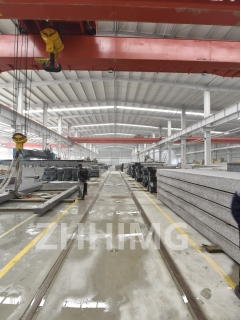Introduction
The semiconductor industry is highly sensitive, and the quality of equipment used in manufacture determines the accuracy and stability of the products. During semiconductor equipment manufacturing, the bed plays a critical role in holding the machine and devices together. The bed's stability determines the performance of the equipment, and for many years, granite beds have been used in many semiconductor equipment. This article aims to evaluate the impact of granite beds on semiconductor equipment.
Advantages of Granite Beds
Granite is a natural stone with unique qualities that make it an ideal material for use in semiconductor equipment beds. The material has high density, excellent stiffness, and vibration damping properties. This makes the granite bed the perfect platform to support the semiconductor equipment, minimizing the effects of vibration which can impact the accuracy of the equipment.
Also, granite beds do not rust, and they are not affected by any form of corrosion. This makes it a durable material that can sustain the equipment for an extended period without requiring regular maintenance. Granite also has a high melting point, making it resistant to high temperatures, which is a common problem in semiconductor manufacturing. The stone's surface is also very smooth, providing an almost frictionless surface, which can minimize wear and tear.
Effects on Accuracy
Accuracy is one of the key elements in the semiconductor industry, and the choice of bed plays a vital role in precision. Granite beds offer remarkable accuracy due to its stiffness, which resists deformation. The surface of granite beds is also highly polished, which provides a flat surface for the milling or placement of parts. This enhances the accuracy of the equipment because the parts are precisely placed.
The accuracy of the granite bed can also be maintained for an extended period due to the stone's inherent qualities. It is worth noting that any deformed or worn out areas on the granite bed can be resurfaced, thus restoring the equipment's accuracy. Regular maintenance of the granite bed can enable the semiconductor equipment to consistently produce precise results, thereby having a positive impact on product quality and reliability.
Effects on Stability
Another crucial aspect of semiconductor equipment is stability. The stability of the equipment is dependent on the bed's ability to resist and absorb vibrations. Granite beds have a high-density, which minimizes the impact of vibrations on the equipment. The stone's molecular structure absorbs shockwaves, providing a stable and dependable platform for the semiconductor equipment.
The stability of the equipment is also vital during the manufacturing process, where precise cuts and shapes need to be made. The rigid nature of the granite bed ensures that the equipment is not displaced during manufacturing, thus keeping the tolerances in the circuit paths.
Conclusion
The impact of granite bed on the accuracy and stability of semiconductor equipment is positive. Granite beds offer stiffness, vibration damping properties, and are resistant to high temperatures. They are also durable and require less maintenance. Furthermore, granite beds provide a flat surface, ensuring precision and stability during the manufacturing process. Therefore, the use of granite beds is recommended in the semiconductor industry for their many benefits.
Post time: Apr-03-2024

